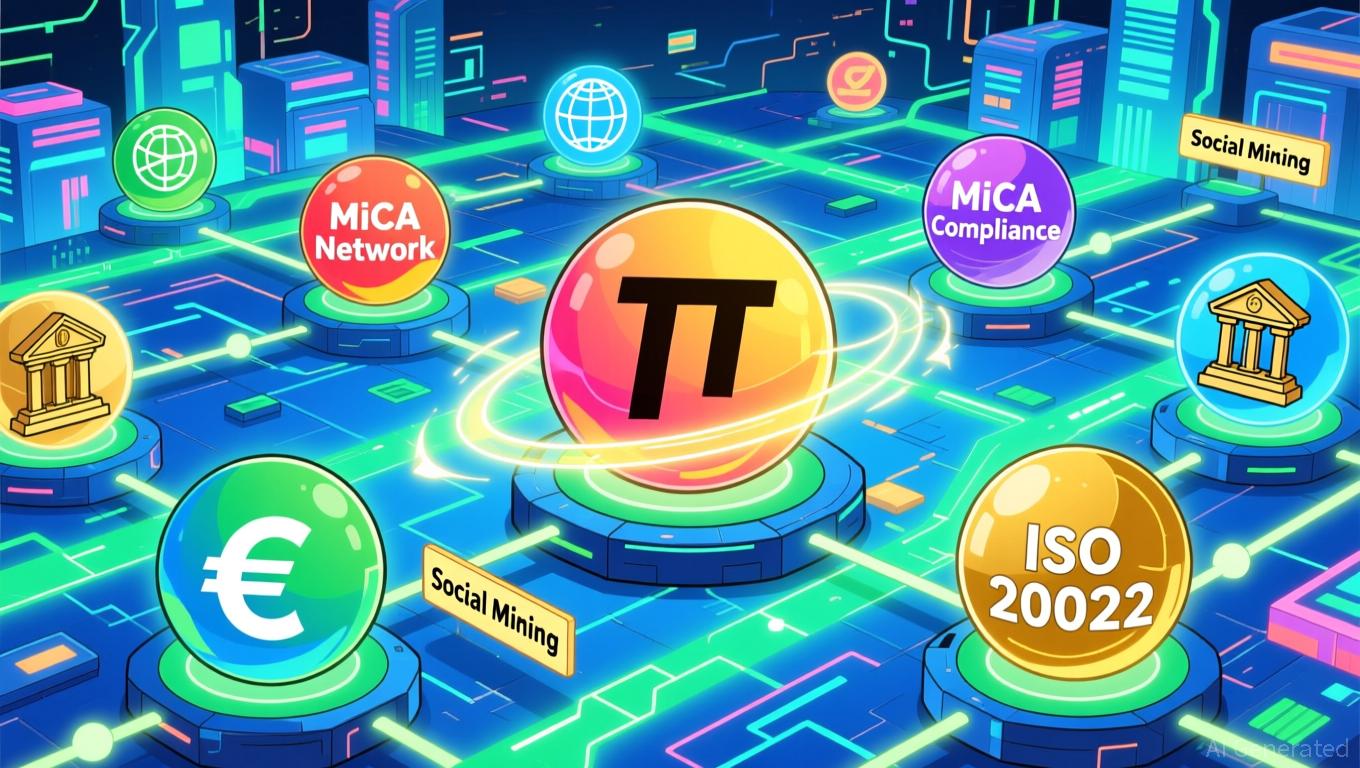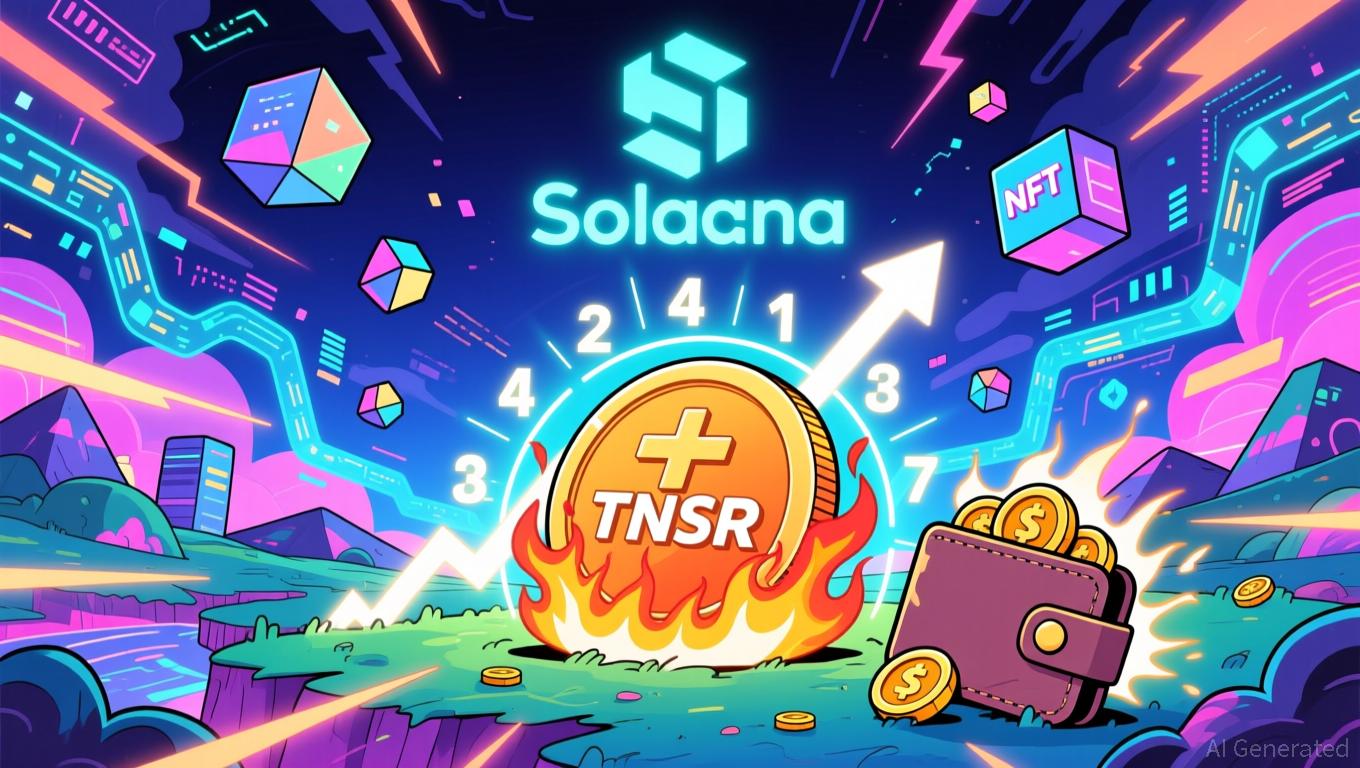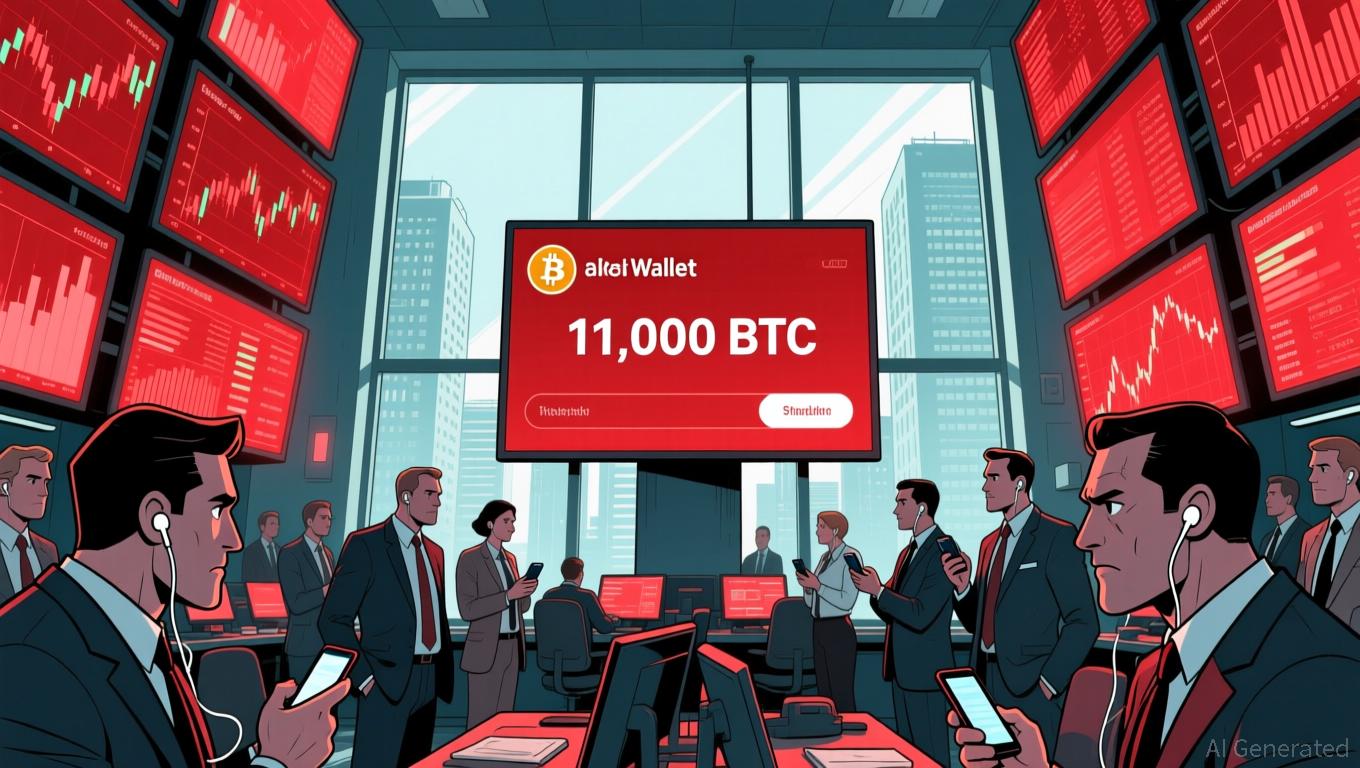Pi Coin’s Absence from ISO 20022: Prioritizing MiCA Adherence and Advancing Ecosystem Expansion
- Pi Coin's exclusion from ISO 20022 is strategic, prioritizing MiCA compliance and community-driven growth over institutional banking integration. - ISO 20022 focuses on institutional crypto assets like XRP , while Pi Network emphasizes EU regulatory alignment and social mining accessibility. - Analysts note Pi's phased approach includes ecosystem development (wallets, tools) before pursuing banking integration, with MiCA compliance enabling EU exchange listings. - The project's organic adoption strategy
The fact that Pi Coin is not listed as ISO 20022-compliant has generated discussion among crypto enthusiasts, but market observers suggest this is consistent with Pi’s distinctive approach and regulatory focus. ISO 20022 is an international standard for financial communications and cross-border transactions, mainly intended for digital currencies that are built to work within institutional banking systems. In contrast, Pi Network follows a different path, emphasizing social mining, grassroots adoption, and adherence to EU regulations,
ISO 20022 standardizes the formats and protocols for financial operations such as bank payments and international settlements. Cryptocurrencies like

Market analyst Mansingh Rajput points out that Pi Coin’s lack of ISO 20022 status is intentional and not a misstep. The current stage of the project is dedicated to building a robust ecosystem—featuring a non-custodial wallet and developer resources—rather than seeking immediate integration with banking networks. Rajput emphasizes that ISO 20022 adherence demands “precise valuation, liquidity on multiple exchanges, and regulatory certainty”—goals Pi Network is steadily working toward
The Pi team has also refrained from manipulating supply or implementing artificial value controls that could complicate regulatory review. By prioritizing community-led governance and practical use cases, the project seeks to foster genuine adoption before engaging with legacy financial systems
Although being ISO 20022-compliant might eventually boost Pi’s appeal to institutions, Rajput believes that moving too quickly could be detrimental. “Banks will embrace Pi when the network proves its worth,” he stated,
With MiCA compliance and a carefully managed market entry, Pi is well-positioned for broader European adoption, which is a vital milestone toward worldwide relevance.
---
Disclaimer: The content of this article solely reflects the author's opinion and does not represent the platform in any capacity. This article is not intended to serve as a reference for making investment decisions.
You may also like
Bitcoin News Update: Bitcoin Falls Under $87K: Opposing Indicators Suggest Recovery Possible During Market Volatility
- Bitcoin fell below $87,000 in November 2025, triggering $914M in liquidations but retesting key technical support levels. - Contrarian signals emerge as retail fear indices hit yearly lows, historically preceding market reversals amid Fed easing expectations. - Corporate adoption grows: MicroStrategy's $2.8B Q3 profit highlights BTC's institutional value despite retail volatility. - Market dynamics shift with Bitcoin's dominance dropping to 58.8%, suggesting cautious altcoin rotation and regulatory risks

X Financial Reports 23.9% Revenue Growth Amid Quarter-over-Quarter Profit Decline and Strategic Adjustments
- X Financial reported 23.9% YoY revenue growth in Q3 2025 despite 26.1% sequential non-GAAP net income decline, driven by rising credit costs and moderating borrower activity. - Strategic pivot to disciplined risk management projected Q4 2025 loan originations of RMB21-23B, while $48M remains in its $100M share repurchase program after 4.26M ADSs bought back in 2025. - XRP Tundra accelerates institutional acquisition with December 15 retail allocation deadline, while CI Global merged funds and expanded cu

TNSR Jumps 80% Despite Crypto Slump, Sparking Concerns Over Centralization
- TNSR surged 80% in 24 hours amid broader crypto market declines, driven by Tensor Foundation's acquisition of its NFT marketplace and token supply adjustments. - The deal included burning 21.6% unvested tokens, relocking founders' tokens, and centralizing 100% marketplace fees to boost treasury and governance alignment. - Analysts highlight mixed reactions: while structural changes boosted investor confidence, low NFT trading volume and governance centralization raise sustainability concerns. - TNSR's 40

Bitcoin Updates: Crypto Market Swings Intensify Amid Whale Sell-Offs, Quantum Security Concerns, and Growing ETF Presence
- Bitcoin whale Owen Gunden liquidated his 14-year 11,000 BTC portfolio ($1.3B) in tranches to avoid market slippage, signaling bearish sentiment amid crypto's volatile weekend. - 21Shares launched the 2X Long Dogecoin ETF (TXXD) on Nasdaq, marking institutional adoption of meme coins despite DOGE's 19% 30-day price drop. - Quantum computing risks resurfaced after Ray Dalio's comments, sparking debate over SHA-256 vulnerabilities and exacerbating retail investor panic. - Peter Schiff challenged MicroStrate
